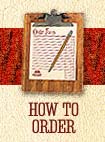VIOLIN, SING THE BLUES FOR ME
African-American Fiddlers 1926-1949
Old Hat CD-1002
In The Beginning of the Blues, There Was a Violin
by Ed Ward / The New York Times / October 17, 1999
The blues has become so pervasive in American music that people just assume it has been around forever, as if American slaves, no sooner than their plight in this country became clear to them, reached out for a guitar and started singing the blues. Even those whose knowledge of American music runs a bit deeper are usually surprised to learn that the blues is only as old as this century.
For the most part, so is playing African-American music on the guitar. The black musical forms that preceded the blues relegated the guitar to role of accompanist, and in rural areas, the main instruments for dancing were the banjo- a more complex version of an African instrument- and the fiddle. The pioneering efforts of folklorist John Work, whose students at Fisk University recorded some old men playing banjo-and-fiddle dance music in 1942 revealed that it sounded more like bluegrass than blues. What we realize is missing are the “blue notes”- the flatted thirds and fifths that are considered as integral to African-American music as the blues form itself.
And contrary to conventional wisdom, the blues did not immediately dominate black music. Musicians who played in juke joints and night clubs had to add it to their bag of tricks if they expected to work, but older styles like ragtime and hokum held on because black audiences liked variety.
These thoughts are occasioned by the arrival of a remarkable new CD, Violin Sing The Blues For Me, which collects 24 recordings made from 1926 to 1949, on Old Hat, a tiny North Carolina label. The violin, it turns out, was more tenacious and prevalent than many blues fans thought, showing up in the hands of the guitar virtuoso Lonnie Johnson (whose “Violin Blues” includes the injunction from which the compilation takes its name), playing along with the Memphis Jug Band, and on the original 1935 hit recording of Joe Williams’ signature tune, “Baby, Please Don’t Go.”
There are many surprises here: for one thing, blues violin wasn’t confined to a particular region. There are examples from the Carolinas and the Mississippi Delta as well as St. Louis and Kansas City. For another, the violin almost always shows up in bands next to its close relative the mandolin, another instrument whose place in blues history has been neglected. And playing styles ran from smooth to primitive: Dad Tracy’s playing on “Baby, Please Don’t Go” is as fluid as you would want, and it’s a shock to discover that he used a homemade one-string fiddle.
Another discovery is that the violin didn’t only echo the mournful sound of the blues guitarist. A lot of the tunes on this disc are raucous good-time dance music. They remind us that two of the most in-demand groups in Memphis during the late 1920s were the Memphis Jug Band and the Mississippi Sheiks. The Jug Band mixed all kinds of music into its performances (although the violinist Charlie Pierce, heard here on “Memphis Shakedown,” wasn’t a regular member and only a handful of the band’s 80-odd recordings feature the instrument.) And the Sheiks were a guitar-and-violin duo that featured the violinist Lonnie Chatmon, whose playing set the standard for blues bands for many years.
Rougher players, like Henry (Son) Sims, were more popular in rural areas. Indeed, he is heard here with the Delta blues legend Charlie Patton on guitar. But in a 1942 photograph, he is seen playing violin next to a young Muddy Waters, whose electric guitar work would revolutionize Chicago blues in a few years.
But I don’t want to give the impression that Violin, Sing The Blues For Me is a dull academic-sounding treatise. This is as entertaining a collection of American folk music as you’ll find, and the producer Marshall Wyatt has assembled a diverse group of artists, obscure and well-known. He wisely eschews a chronological approach to the material in favor of sequencing it so that you can just throw it on the album anywhere and enjoy it.
In doing so, he has opened to further exploration of the violin’s role in African-American music of all kinds, from Ray Nance with the Ellington orchestra to Don (Sugarcane) Harris (who started with the 1950’s rock-and-roll duo Don and Dewey and wound up in Frank Zappa’s band in the 1970’s) to contemporary jazz musicians like Leroy Jenkins and Billy Bang. All of whom consider the blues a source in their varied approaches to what they play.
|















